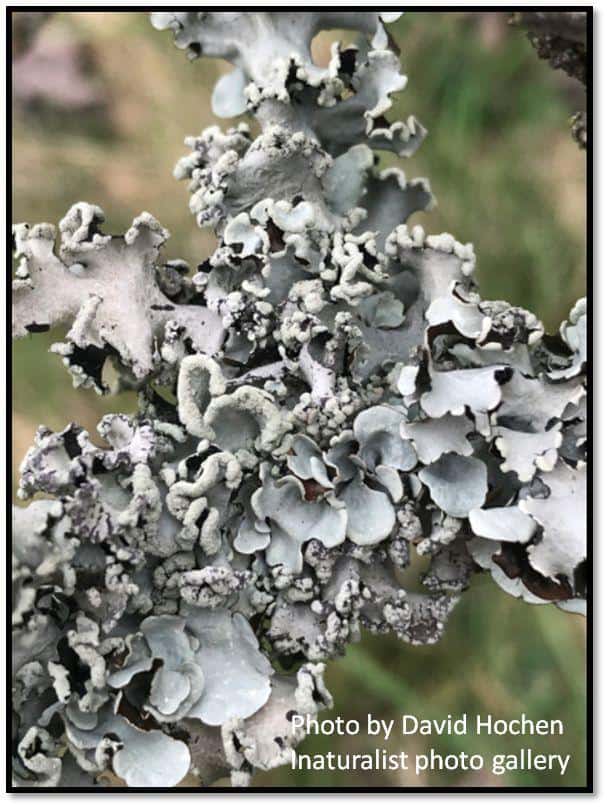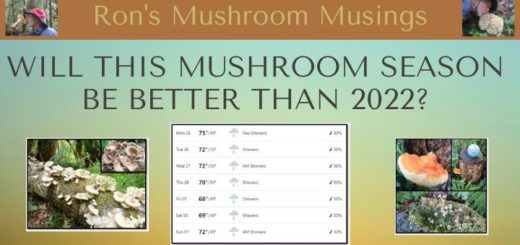Friends with benefits

When I was in High School, having friends with benefits meant knowing people you could pal around with who had both a drivers license and a car. Although growing up on Army bases made it safe and easy to walk to places on-base, friends with a car gave you the ability to explore the world beyond our gilded cage. Besides, who wants to explore new worlds and boldly go where no Army brat has gone before by themselves or on foot. Looking back, I can see where this association between myself, a friend or two and a car represented an adventuresome form of “friends with benefits”. In comparison, the close relationship featured in this article literally embodies the biological meaning of “friends with benefits”.

No, this is not about mycorrhizal fungi that we are all quite familiar with, it’s actually about the mostly overlooked yet quite amazing lichen. Before you say “Hey, that’s not a mushroom”, let me remind you that lichens are in fact part of the Kingdom Fungi, at least for now. And not unlike mycorrhizal fungi that need plants to supply them with life giving carbohydrates, the fungal part of a lichen also engages in paring up with carbohydrate producing partners. In short, as renowned lichenologist Trevor Goward once stated “Lichen are fungi that have discovered agriculture.” Lichens are not new to this world, their existence has been dated back some 250 million years. During that timeline the earth was transitioning from the Permian Period to the start of the Triassic Period, which also ushered in the rise of movie-worthy reptiles and dinosaurs.
So what in fact are lichens? Simply put, they are symbiotic organisms made up from members of as many as three separate kingdoms; the kingdom fungi, the kingdom Protista which includes algae, and the kingdom Monera which includes cyanobacteria. Not that long ago, the lichen was thought of as a hostile entrapment of an alga or cyanobacterium by a self-serving, domineering fungus solely to exploit their ability to produce life sustaining carbohydrates. I find it interesting that whenever some new organism is discovered and described, scientists often start out by thinking the worst about its intentions. Similarly, every movie I’ve seen where space aliens arrive on earth, the aliens are instantly portrayed by the military, politicians, scientists, and the general public as wanting to eat us, dissect us, or exterminate us. Perhaps humans are just inherently cautious or maybe our dubious tendencies are simply part of our DNA.

While we have not gotten any better regarding our views about space aliens, at least researchers now have a much better understanding of lichens. Not only does a lichen not represent a hostile environment, it can consist of more than just one fungal organism (referred to as a mycobiont) and more than one photosynthetic organism (referred to as a photobiont). The body of the lichen is called the thallus and is formed by the fungal partner while one or more of the photosynthetic partners are typically found in a thin layer or in isolated pockets of the thallus. In a LibreTexts article by Maria Morrow, she wrote “The mycobiont is responsible for maintenance of the lichen thallus, while the photobiont is responsible for producing food for both partners through photosynthesis. A cyanobacterial partner might also be fixing nitrogen for the lichen. As the study of lichens progresses, we are uncovering more partners with as yet unknown roles, such as basidiomycete yeasts and bacteria.” The article included a very nicely constructed drawing of the mycobiont/photobiont relationship provided by Nefronus via Wikimedia Commons. In this drawing, the letters are defined as follows; a) upper cortex, b) layer containing the photobiont, shown as green algal cells wrapped in fungal hyphae, c) medulla, d) lower cortex, and e) rhizines (root-like structures that protrude from the lower cortex and anchor the lichen to its substrate).

Lichens have been grouped into three major types based on their morphology. As shown in the illustration on the left, these are crustose (crusty), foliose (leafy), and fruticose (shrubby). A good example of the crustose form can be found under our feet when walking on a sidewalk. It is that ubiquitous, grayish looking roundish splotch with very tiny cup like structures that dots just about every sidewalk in Eugene. Foliose can be a little more difficult to place since their leafiness can be quite subtle or dramatic like that of the lungwort lichen (Lobaria pulmonaria). One does not need to travel far to find really cool examples of each of these lichen types, especially if you’re like me and like integrating logs and stumps from the woods into your landscape. In fact, the first picture in this article named “Photo by Ron” is of the trumpet lichen (Cladonia fimbriata) on a landscape log and is a good example of a fruticose type lichen.

While lichens may not seem like overly complex organisms, they have survived and thrived in some of the most inhospitable environments. An article on earthobservatory.nasa.gov stated that “Lichens tolerate extreme cold and dry conditions through dormancy and the ability to recover quickly when conditions are favorable. Although lichens can grow in regions with more rainfall, they actually require little rainfall to survive.” The article should also have mentioned that after samples of lichens spent 16 days in space, without their little lichen spacesuits, findings indicated that most lichenized fungal and algal cells can survive in space after full exposure to massive UV and cosmic radiation. These conditions have proven to be lethal to bacteria and other microorganisms. I also believe floating in space without a spacesuit is quite lethal to humans as well.

OK, Lichens are good, lichens are great, but can I eat them? Actually, while a few species have been eaten by people or used for making tea, some species are mildly toxic and a few are quite poisonous. One of the lichens I discovered via internet searches, used for both culinary and medicinal use, is commonly called the Black Stone Flower (Parmotrema perlatum). It also goes by several other common names based on geographical area. While I did not look up exact recipes, its stated medicinal benefits are seemingly endless. Subsequently, lichens have gotten quite a bit of interest from the biopharmaceutical industry for their bioactive compounds but currently there is limited interest in lichens as a culinary ingredient. That is unless you’re a goat, deer, moose, or caribou which regularly consume them and fortunately have stomachs adapted to break down the lichen’s complex carbohydrates. Lichens are also used as bedding or nest building material by other forest dwellers. In medieval times, lichens were used to make dyes for cotton and wool, a practice that is still quite popular today. While there was once a large commercial interest in lichen dyes, that began to decline in the late 1800’s when synthetic dyes started being produced. I’m sure the lichens were very happy about that transition.
With over 20,000 lichens identified worldwide and over 1,000 here in Oregon, there are lots to discover and be amazed by. Lichens can also live for thousands of years with some having already celebrated their 10,000 birthday; now that’s a lot of candles. Exact species identification can be very tricky for some lichens and often require lab analysis. I have found the 2nd addition book “Macrolichens Of The Pacific Northwest” by Bruce McCune and Linda Geiser to be very useful as it focuses on our region of the country. There are also many interesting and informative lichen articles on the web and I’ve included links to just a few of them below.

Given all the amazing conditions lichens can endure and their longevity, one might get the impression that they are indestructible organisms. Sadly, much like Superman has his kryptonite, Lichens have their threats as well. Some lichen species have already been adversely impacted by urbanization, agriculture, pollution, recreational land uses, sea level rise, and the really big one being climate change. Basically, lichens version of kryptonite seems to be Homo sapiens (Latin for wise man or knowing man), 7.9 billion of them and growing. So, when it comes to population count, Homo sapiens are actually all multi-billionaires.

Considering the ever increasing impact on lichen populations, harvesting should be limited to only those that have fallen to the ground or otherwise dislodged from their natural habitat. Compared to some species of bamboo, which can grow 91 centimeters (35 inches) per day, lichens grow at a turtle’s pace, the fastest expanding by a rate of just 1 centimeter (0.39 inches) per year. There are currently only 2-lichen species listed on the U.S. Endangered Species list; Cladonia perforate (listed in 1993) and Cetradonia linearis (listed in 1995). In contrast, Hawaii has 26-lichen species on their endanger species list. Unfortunately, it is likely that many more will eventually make these lists.
One note of caution regarding common names, as quite a few contain the word “moss”. Examples include Oak Moss, Reindeer Moss, and Spanish Moss, none of which are really mosses. The first two names actually relate to lichens while Spanish Moss is neither a lichen nor a moss, rather it’s a Tillandsia (air plant). While some Tillandsias can resemble lichens and some lichens can be confused with mosses, there are many great reference books to help you uncouple who is who. It is also important to note that no lichens nor space aliens were injured during the writing of this article. However, I’ve had my suspicions about their intent.
Take care and don’t forget to spend a life renewing day in the woods where I’m certain you’ll be lichen what you see. Sorry, I just couldn’t pass that up. I was going to end with something that started out; a fungus, an alga, and a cyanobacterium walk into a bar……
Ron
References
Common Macrolichens of the Pacific Northwest
The Lichen Mutualism Described – Libre Texts Library
Lichens – Ohioplants.org (Great pictures and video)
Species of the Week: Opegrapha edsonii – One Earth
Lichen: Life working together The San Juan Preservation Trust
Lichens, Did You Know – US Forest Service
Lichen Habitat – US Forest Service
North American Lichen Herbaria
The Black Stone Flower Lichen – Linkedin





